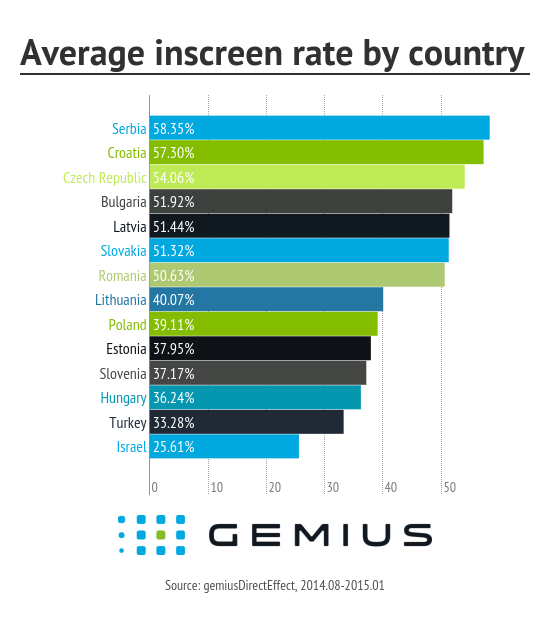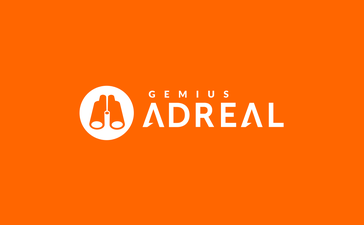
What does inscreen mean to online publishers?
It is impossible to deliver 100 per cent of impressions inscreen
Whatever the buying decisions taken, in practice it is impossible for all impressions to be delivered inscreen. This is true even for the ones above the fold. Most often users simply don’t scroll down to where the banner is located. So there will always be a portion of a publisher’s inventory that is not visible to users and as such has no real value. The latest Gemius data shows that the share of the missed ads is close to 50 per cent.
How can publishers face the new situation?
Publishers are pressed by media buyers to switch from trading based on served impressions to inscreen impressions. As a result, some publishers in the CEE region have set out with guaranteed campaign inscreen impression ratios. The sales model they assumed here is to create different pricing for inventory with 60 per cent+, 70 per cent+ and 80 per cent+ inscreen ratios. This helps publishers to avoid dramatic price increase and to keep part of non-viewable banner display accountable.
However, such campaign delivery model is not in line with ad server planning capabilities and involves a lot of manual work. Publishers can only choose to display the campaign on more visible placements but they cannot influence the ratio itself. It is much easier for ad technologies to distribute impressions with a set goal of total inscreen impressions. In other words, publishers should sell and plan 100 per cent on inscreen impressions. Such delivery can be fully automated
Inscreen planning in AdOcean
The most recent development in AdOcean ad server facilitates planning inscreen campaigns automatically, as if they were simple clicks. The server learns about a placement’s in-screen ratio and tunes the intensity of banner displays to reach the preset goals. At the end of the campaign, the agreed number of inscreens is rendered, with the total number of impressions much higher.
Another challenge for ad tech is to solve the problem of discrepancies between different measurement providers. As with served impressions, it’s inevitable to have slight differences on inscreens data between agency and publisher tools. Gemius, one of the leading technology providers in the region, has found a way to scale down the discrepancies between its tools: gemiusDirectEffect and AdOcean. Therefore our clients can benefit from greater transparency.
Publishers will have to adapt
TV and other forms of advertising don’t have to cope with the problem of a display being out of sight. Leaving the question whether such ads or commercials are seen and noticed aside, they certainly are all visible by default. Online publishers can’t ignore this disadvantage any longer. They have to adjust to market needs and improve their offer accordingly. Publishers can use this as an opportunity to increase their prices and charge customers more for more efficient advertising. And the good news is that the technology required to bring this business into life is already there.



